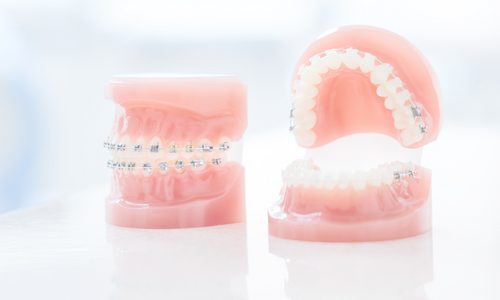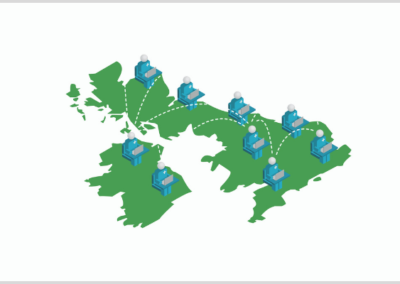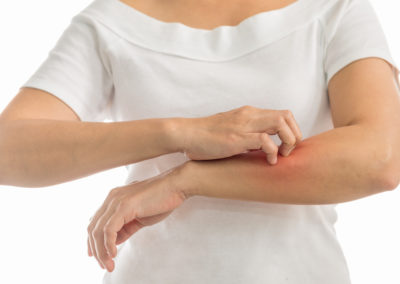‘Consultant Connect is of benefit as we’re able to have a conversation with colleagues. This often ends up saving a lot of worry and time for patients and dentists.’
Meryl Spencer has been working as a consultant orthodontist at Morriston Hospital in Swansea Bay University Health Board (SBUHB) in Wales for 13 years. Since early 2022, Meryl has been responding to Messaging Advice & Guidance requests from GPs and dentists in the area via Consultant Connect.
We asked Meryl to tell us about her experience of the service, including the benefits to clinicians and patients.
Can you tell us about how clinicians would contact you/your team prior to the Consultant Connect service being available?
‘Occasionally, dentists may write us a letter if it has to do with the patient’s ongoing care.
Colleagues in the Community Dental Service (CDS) would email us for advice, but this was related to a specific group of patients who required orthodontic input prior to the removal of decayed back teeth. In the majority of cases, we had to ask CDS colleagues to then refer the patient officially through the e-referral system. However, generally, prior to Consultant Connect being introduced, we didn’t really have an official service where we could have a dialogue with other clinicians. In most cases, patients would be referred, go through the referral process, and either be triaged as urgent or routine (because their teeth weren’t in imminent danger of being lost).’
As a consultant, what are the benefits of providing Advice & Guidance via the Consultant Connect Messaging feature?
‘The Consultant Connect service is very easy to use. I get an email notification to say when a new Advice & Guidance message has been sent for review. I am then able to click on the link in the email and securely log in to Consultant Connect in my browser to review the query.
The majority of clinicians have been brilliant at using the upload photo/files feature on Consultant Connect. Most include x-rays and photos alongside their Advice & Guidance queries.
Consultant Connect is great because we’re able to have a conversation with our colleagues, which often ends up saving a lot of worry and time both for them and their patients.’
What types of Advice & Guidance queries are you sent via the service?
‘I would say we see three main types of queries via the service:
- Firstly, we have started using it to provide orthodontic treatment plans for some DWSI (Dentists with a Special Interest) cases. Often, these cases are straightforward, and the patients don’t need to be seen in the hospital to be treated.
- Secondly, we sometimes use it to assess cases with carious first molars, although these often have to be assessed clinically.
- The remaining group of patients are really the bulk of referrals from General Dental Practitioners (GDPs). They are probably quite interceptive in nature, as the dentists will be looking to intervene with something simple now, to save problems later on. For example, there may be children who have retained baby teeth with permanent teeth underneath and the dentist, understandably, is a bit reluctant to do anything prior to seeking advice. Other types of queries are where the children have extra teeth that come through in the wrong place, which can cause anxiety for them and their parents and carers. In these scenarios, the dentist will send an x-ray and maybe photographs alongside their query, and this enables me to easily advise them on what to do and avoids the patient needing to come in for an assessment. Being able to provide advice in this way saves all parties time.’
Can you provide an example of a case where the service benefited a patient?
‘In general, the service is of huge benefit to patients. Being able to advise on orthodontic treatment plans means the DWSI can start certain cases much sooner. Because of recent pressures, the patients would have been waiting probably a year to 18 months before being assessed by us.
A general example recently was a dentist sending in a photo of a patient with an extra tooth in the palate, behind the front teeth. I advised the dentist to remove the tooth, which saved the patient from needing to be referred in and waiting a long time to see us. It also saves on the expense of time and travelling and reducing elective care long waits.’
Do you have any other feedback?
‘The Orthodontic Department at Morriston Hospital covers a large geographical area. Some patients could be travelling one and a half to two hours to see us for something that is relatively straightforward. People are busy, and children have to miss school. Saving these specific groups of patients having to travel to attend a hospital appointment helps environmentally as well.’
Click here to view and download a PDF version of this case study.
If you have any questions about this service, please get in touch on 01865 261467 or at hello@consultantconnect.org.uk.





